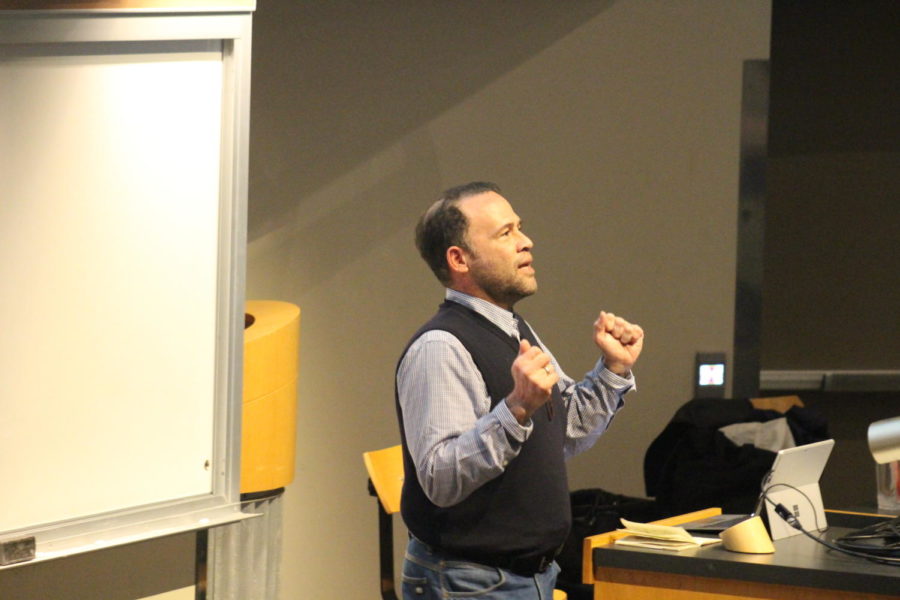Landscape architect discusses the impact of sketching in design
Richard Alomar, an associate professor of landscape architecture at Rutgers University speaks about sketchbooks and journals as mediums for data collection and presents sketching exercise examples and share ways students can develop a practice of sketching to record their experience at the Design building on Monday. He explains the example of a sketch walk as a way to educate, discover, record and share for a form of a mental camera roll. “The sketch is not the end of anything, it is only the beginning,” said Alomar.
April 15, 2019
Richard Alomar, associate professor at Rutgers University and registered landscape architect, gave a lecture Monday titled “Sketching: The Mental Camera Roll,” discussing the world of sketching and how much of an impact sketching has on the creativity portion of design.
Alomar currently does landscape architecture at Rutgers University and has been involved with working on public projects from urban planning, to working on community gardens and has won international competitions for landscape design in places like Chicago and Verona, Italy.
A challenge that Alomar posed during the lecture was for people to look at a picture that he put up and for them to draw it by memory.
“When I talk about sketching, when I talk about digital, when I’m talking about analog, I’m also talking about our engagement in that landscape as being part of the landscape,” Alomar said. “My understanding, my personal view of it is that we are part of the landscape, we are not apart, we are a part.”
He also asked people how many photos people had saved on their phones, some who answered said they have over 5,000. Alomar then asked everyone what the criteria is for deleting any photos on their phone.
“There is no criteria for taking the picture or deleting the picture, it’s just like a bunch of stuff that just accumulates,” Alomar said. “In design we collect data but we have to synthesize the data that we have, be physical data or environmental data, we have to have the capacity to take that bunch of stuff and dwindle it down to a few pieces we can play around with to create space.”
Alomar talked about the differences between sketching and technology, saying how sketching involves the movement of your whole body and makes you think, and that the downside of technology is that it makes a lot of things simple, which shouldn’t be simple in the first place.
“There are things that we have to struggle with to understand, and if its made easy and there is no struggle, then there is really no understanding,” Alomar said. “So sketching at least for me gives me that sort of bridge to understand.”







